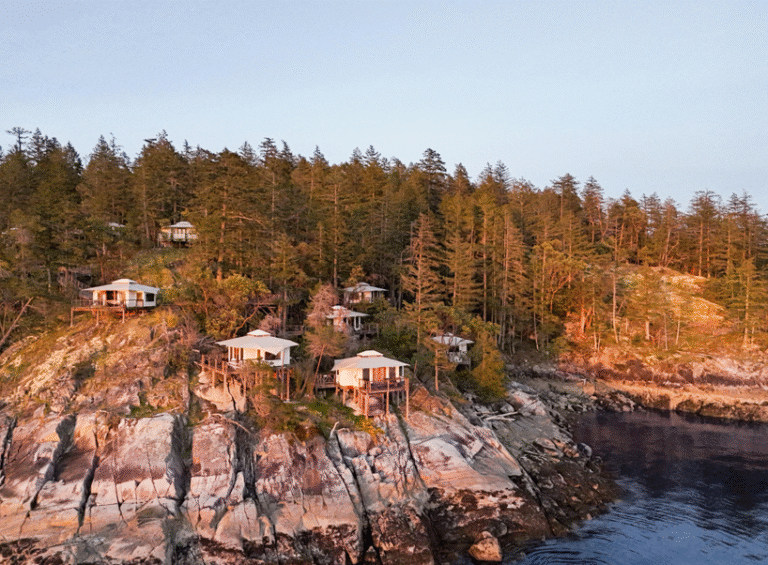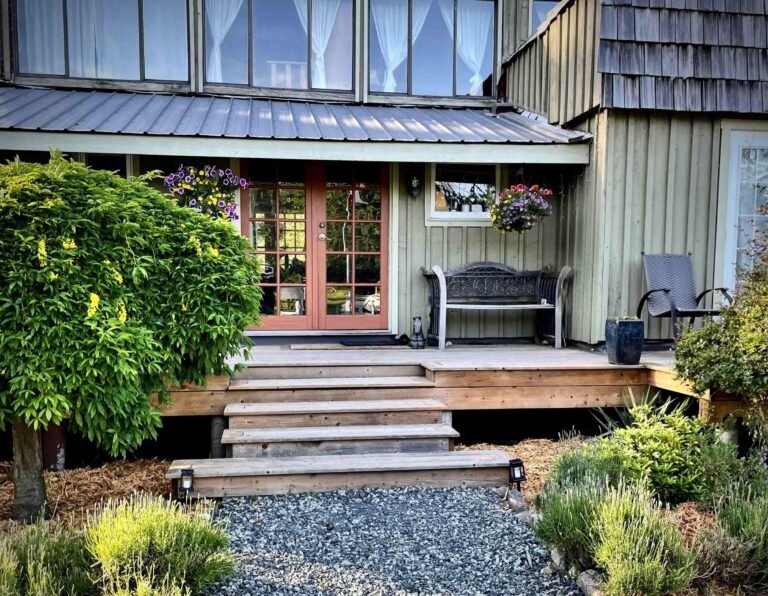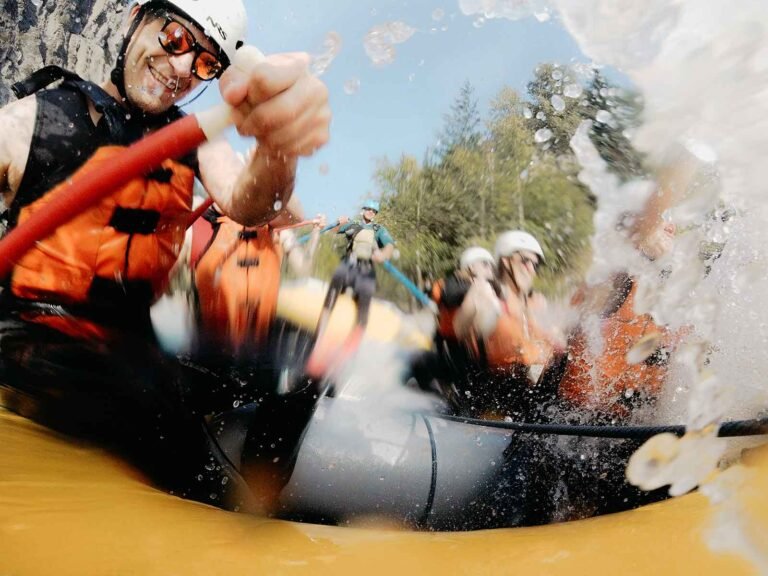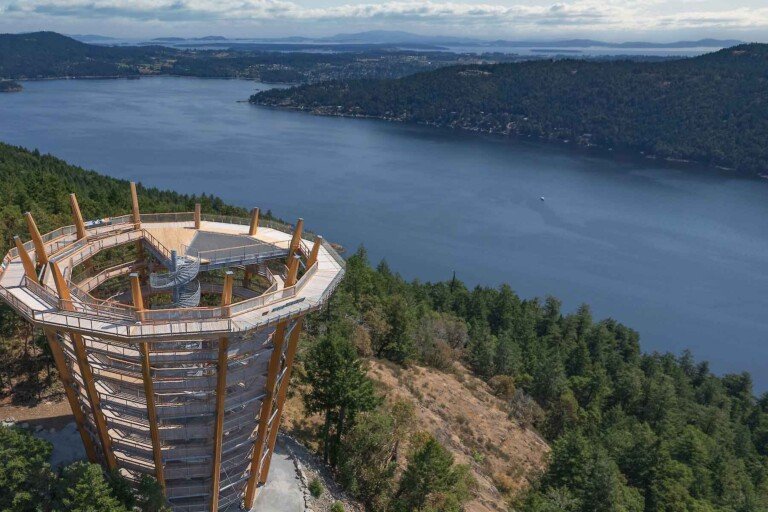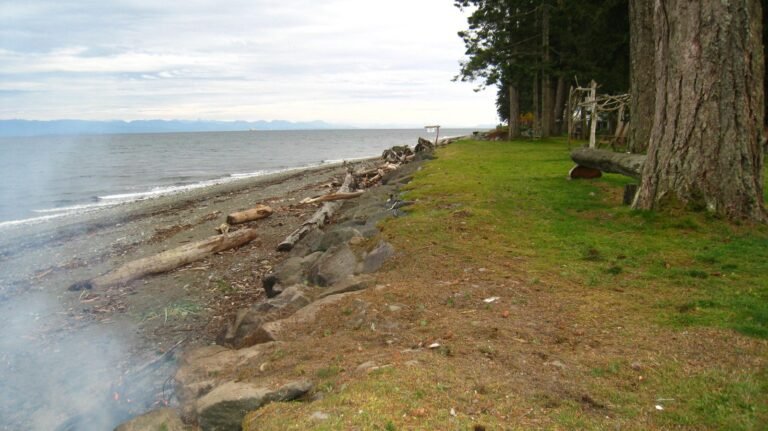Vancouver Island contains over one thousand mysterious subterranean caves and tunnels, offering spelunkers a challenging underground maze of cathedrals and corridors, bones and skulls, mineral formations and ancient native pictographs.
If donning a headlamp and willingly descending into the murky, unmapped bowels of the earth is your thing, then spelunking on Vancouver Island will thrill you to the core!
Upana Caves, all 100 or so of them, are located about 17 km west of Gold River, on Head Bay Forest Rd. They provide an awe-inspiring adventure for those who like to explore the interior of the earth. There are fifteen known entrances within the system. The combined length of cave passages is approximately 450 meters (1 475 feet). The individual caves vary in size from single rooms to branching passages of considerable length. The overall passage and room dimensions are comparable with those of other Vancouver Island caves. Dress warmly, as these caves, the deepest north of Mexico, extend more than 2,000 feet (610 m) into the honeycombed limestone rock. You can take a self-guided tour through a network of caves or join a guided tour. For an even deeper adventure, join a guided tour of the “White Ridge” caverns. Cavers named the system for the river that flows through one of the caves. The underground sequences of the television series, Huckleberry Finn and His Friends, were filmed at the cave – Gold River is home to the B.C. Speleological Association. There are about 1 050 known caves on Vancouver Island. Most of these caves are found in the Quatsino Formation limestone deposits of Northern Vancouver Island.
Little Huson Cave Park, nestled in the Nimpkish Valley near Port McNeill, offers visitors a chance to view the fascinating Quatsino System – a network of caves that honeycomb Vancouver Island between here and the Strathcona Provincial Park/Gold River region. If you’ve never experienced the sensation of spending time underground, it’s like mountaineering in the dark with the sight of a smooth, white world revealed in the beam of your headlamp. Cave climates are damp and clammy, so dress accordingly. Little Huson’s caves are a good place to begin caving or even to begin considering the possibility. A short trail leads from the parking lot to a view of several caves through which the Atluck River bores.
Horne Lake Caves in Horne Lake Caves Provincial Park are located north of Qualicum Beach. A gravel road leads to the parking area and trailhead at the far end of Horne Lake, about 14 km west of Hwy 19A. You can take a self-guided tour of Main Cave and Lower Main Caves throughout the year. Although the distance covered isn’t great, you’ll have to bend, duck, and squeeze your way through a series of narrow passages.
A footbridge spans the Qualicum River, from where a rough limestone trail leads to the Main Cave. If you’re here in summer, plan on joining the challenging Karst Trail and Riverbend Trail tours, which last about two hours. Tours leave the trailhead on the hour between 10am and 4pm.
No matter when you arrive, prepare yourself for a tour by dressing warmly, wearing sturdy boots, and carrying a bright flashlight. (Helmets and lights are provided on guided tours).
For those with a lust to squeeze deeper into the cave system, the three-to-four-hour Riverbed Bottoming trip leads down through a series of vertical pits, the deepest of which is nearly 19 metres deep.
There are several hundred significant caves to explore on the island, including Karst Creek Trail in Strathcona Provincial Park. A fascinating look at weathering appears along this trail, which begins beside the picnic area on the east side of Buttle Lake. New caves and unusual land formations are being discovered all the time, especially in the North Islands region where amazing natural oddities such as the Artlish River Caves, the Quatsino Limestone Formation, Devil’s Bath, Eternal Fountain, and Disappearing River are located. The longest cave on Vancouver Island is Thanksgiving cave with a mapped length of 7.6 km (4.7 miles). Several other island caves exceed 2 km (1.2 miles) in length.
Keen to spelunk further? For the more ambitious and adventurous souls, wild cave tours can be arranged to larger and more dramatic North Vancouver Island cave systems, with unique surface and subsurface features. Local Visitor Centres provide details and maps and make suggestions regarding tours.
Caving Links:
- Companies that offer Caving Services in BC
- Karst in British Columbia – BC Ministry of Forests
- Caving Canada – The Canadian Caving and Karst Information server


